Interested in solo travel in Mumbai, but need help with planning?
Then you’re in the right place!
India might not be the first destination that comes to mind for solo travel, but in my opinion, it should definitely be on your radar.
While the thought of navigating such a vast and sometimes overwhelming country on your own can feel intimidating, it’s also incredibly rewarding—especially if you start in a place like Mumbai.
Originally made up of seven islands that merged into a bustling metropolis, Mumbai is now India’s financial capital and a true melting pot of cultures. The city beautifully blends rich traditions with modern flair, making it an ideal starting point for solo travel in the country.
Picture a city that combines the energy of India with a touch of London’s cosmopolitan vibe. It’s lively, colorful, and chaotic, but in a way that feels exciting rather than overwhelming.
Mumbai was my first stop on a two-week journey through India, and looking back, it couldn’t have been a better choice. In this guide, I’ll share essential safety tips, logistical advice, and recommendations to help you make the most of your solo trip to Mumbai.
 Short on time? Here are some quick tips for traveling alone in Mumbai:
Short on time? Here are some quick tips for traveling alone in Mumbai:
 Airport Transfer: Book that here
Airport Transfer: Book that here
 Safety: Pack a She’s Birdie Personal Safety Alarm, which is TSA-approved and can help scare away potential attackers, and Clever Travel Companion Pickpocket-Proof Garments
Safety: Pack a She’s Birdie Personal Safety Alarm, which is TSA-approved and can help scare away potential attackers, and Clever Travel Companion Pickpocket-Proof Garments
 Tours: Make sure to book a Highlights of Mumbai Sightseeing Tour, a Guided Mumbai Street Food Tour, and an Elephanta Caves & Island Guided Private Tour
Tours: Make sure to book a Highlights of Mumbai Sightseeing Tour, a Guided Mumbai Street Food Tour, and an Elephanta Caves & Island Guided Private Tour
 Accommodation: This map can help you pinpoint top-rated and budget-friendly accommodation. It’s currently set to the popular area of Colaba, but you can easily change it to your intended neighborhood.
Accommodation: This map can help you pinpoint top-rated and budget-friendly accommodation. It’s currently set to the popular area of Colaba, but you can easily change it to your intended neighborhood.
 Travel Insurance: SafetyWing (budget) & World Nomads (robust)
Travel Insurance: SafetyWing (budget) & World Nomads (robust)
 Staying Connected: Saily eSIM
Staying Connected: Saily eSIM
Travel Solo In Mumbai With Confidence
But first, before we get into our Mumbai solo travel guide, I invite you to grab a seat in Jessie’s free Savvy Solo Traveler E-Course.
The 6-day course is designed to help you feel confident about booking your first solo trip and exploring the world alone.
Lessons include:
- Common solo travel fears and how to overcome them
- How to choose your perfect solo trip
- How to tell loved ones you’re hitting the road solo
- Mentally preparing for your solo journey without losing your mind
- Essential steps for staying safe on a solo trip
- How to take amazing solo selfies
Once you’ve grabbed your seat, read on for tips on traveling Mumbai alone.
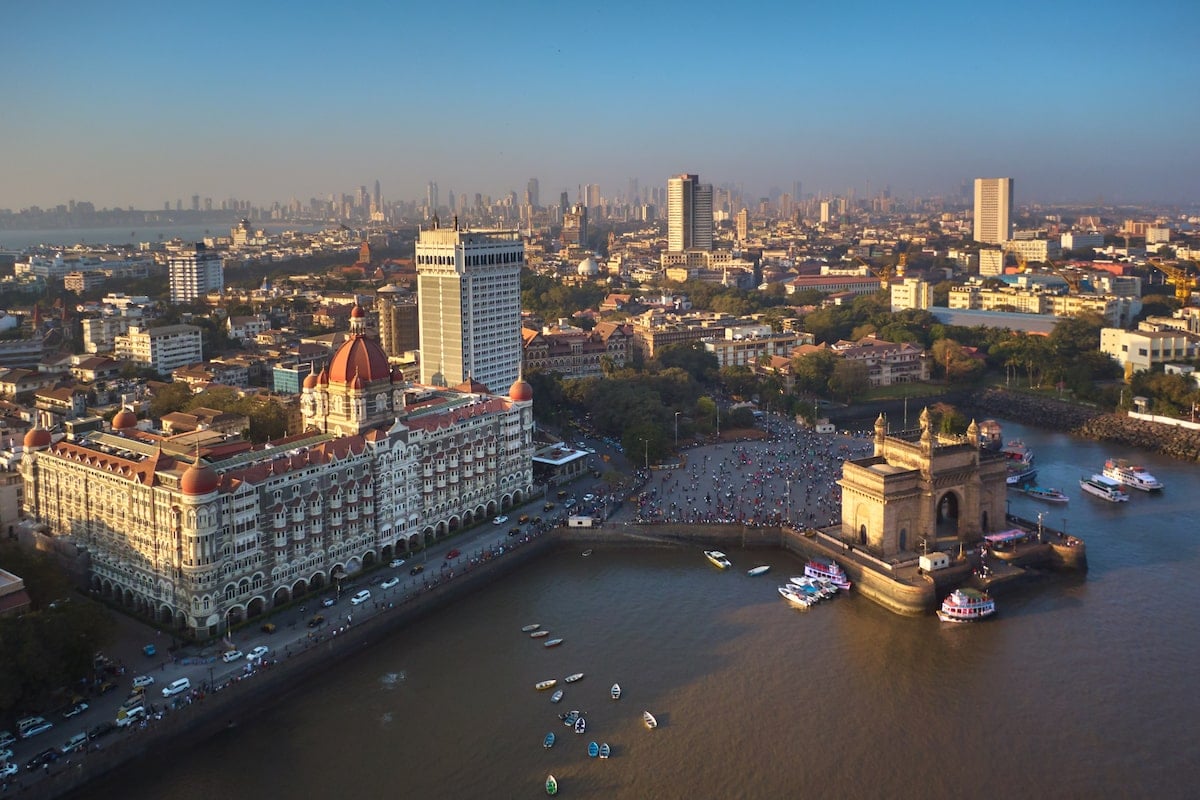
Is Solo Travel In Mumbai Worth It?
Mumbai is a cosmopolitan and developed city in India that doesn’t look that different from London, Bangkok, or New York. There are many things you can do there alone and it’s easy to get around.
Most attractions—like the Gateway of India, Chhatrapati Shivaji Museum, and Flora Fountain—are within walking distance from one another, and are also near some of the city’s best hotels.
Another reason Mumbai is one of the best places to travel solo in India is it’s modern enough to ease you into the experience while still immersing you in authentic Indian culture.
So, yes, solo travel in Mumbai is very much worth it, especially if you’re starting a longer itinerary through India.
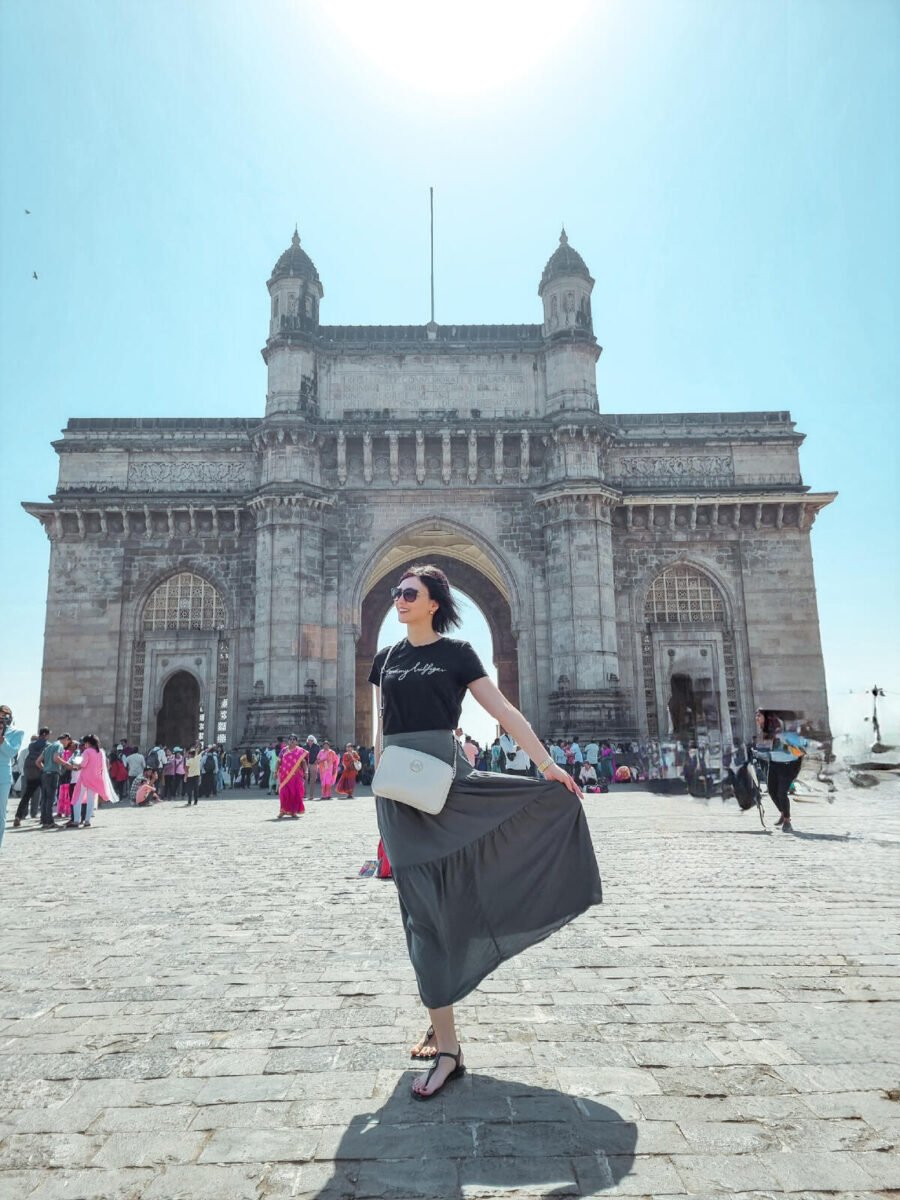
Mumbai Solo Travel Logistics
Where is Mumbai?
Mumbai, formerly known as Bombay, is the capital city of the Indian state of Maharashtra in western India. It is located on a narrow peninsula on the southwest of Salsette Island, which lies between the Arabian Sea to the west, Thane Creek to the east, and Vasai Creek to the north.
Best time to visit Mumbai
The best time to visit Mumbai is from October to February when the daytime temperatures are a comfortable 73°-89° F (23°-32° C). During this time, it is not humid and it’s dry.
The only downside is that it’s a popular time to visit, so you’ll encounter some crowds. That said, I didn’t see as many tourists in Mumbai as in other popular Indian cities like Jaipur and Agra.
You should avoid the monsoon season that runs from June to September. The rainfall gets so heavy during that period that you may find yourself stuck in the hotel room, which can put a damper on the trip.
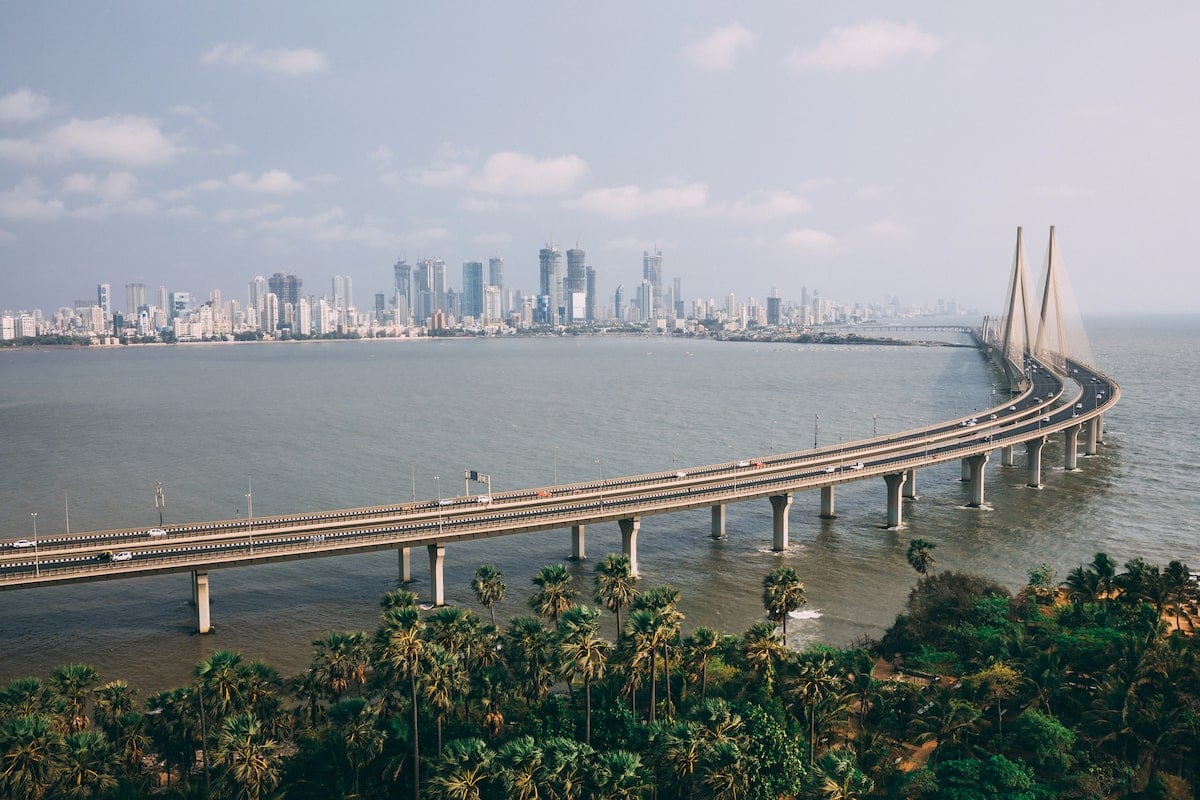
Getting to Mumbai
It is very easy to get to Mumbai from major cities around the world like London, New York, Tokyo, and Dubai, as you’ll fly into Chhatrapati Shivaji Maharaj International Airport, also known as Mumbai International Airport.
If you’re traveling around South Asia or Southeast Asia, you can also find some great low-budget flights to Mumbai.
Once you arrive, be prepared to wait a few hours at customs. Even though the airport is modern and there are many counters, only 2-3 people work at a time so the lines move slowly.
Finally, the easiest way to get to your hotel is to grab an Uber or pre-order an airport transfer.
Getting around Mumbai as a solo traveler
While you can use public transport in Mumbai, I would avoid it as it can get very overcrowded. Even though trains have special women-only coaches and there is a heavy police presence, it’s much easier and more comfortable to take Uber.
With Uber, you know the price, although most of the time you’ll pay directly in cash after the drive ends. You can also track the map so you know you’re heading in the right direction. And lastly, it’s hassle-free.
As I said above, most of the main attractions are very close to one another, so if you’re staying in a touristy area you’ll be able to walk to many places.
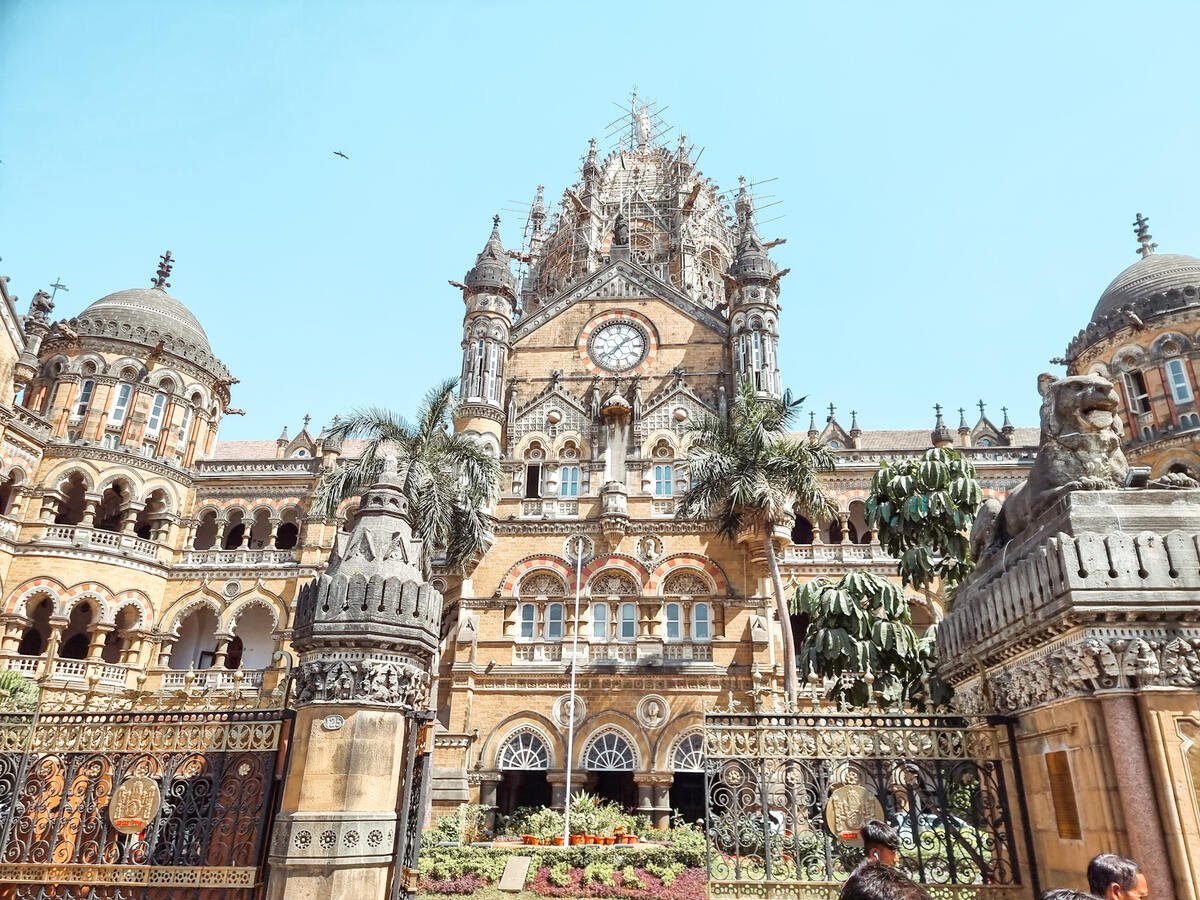
Is Mumbai Safe For Solo Female Travelers?
Now, this is where it gets tricky. Mumbai is generally considered safe for solo female travelers, but there are some things to be cautious of.
According to the Travel Safe-Abroad, the safety index in Mumbai is 49 out of 100. The highest risks are petty crime (pickpocketing, scams), natural disasters (like flooding during monsoon season), terrorism attacks (the most recent one was in 2008, though safety has increased since then), and female safety.
While this sounds worrying, I felt pretty safe in Mumbai. You’ll likely have no major issues as long as you keep general solo travel safety tips in mind and know what to look out for.
First of all, to help keep yourself safe as a solo female traveler in Mumbai, dress modestly by covering your shoulders and knees. Because you’re a foreigner you’ll likely still get some looks even when you’re modestly dressed, but I felt these were more out of curiosity and I didn’t feel intimidated.
Also, avoid telling people where you’re staying and don’t post your location in real-time. Locals wanting to sell you things can be persistent and even follow you, though I found that being firm about wanting to be left alone usually worked.
Do not attend festivals and events (like Holi) alone, as the large crowds and high-energy atmosphere can sometimes lead to situations where personal boundaries are overlooked. If going in a group, I recommend having at least one male with you, even if it’s a local guide.
Now, let’s talk about selfies. You’ll likely find locals approaching you frequently to take a selfie. At one point during my trip, a line formed at a Mumbai beach with locals wanting to get a photo with me and I had to leave. Once this happened, I began avoiding eye contact with anyone who asked for a picture.
In terms of exploring solo, I felt comfortable walking around alone during the day. I hate to say it, but at night it felt safer to walk in a group, particularly if there was at least one man with us.
Keep in mind, you can also book a tour to explore in a group, which also makes it easier to make friends while traveling alone.
 Click here for top-rated tours in Mumbai.
Click here for top-rated tours in Mumbai.
 Click here for night tours in Mumbai.
Click here for night tours in Mumbai.
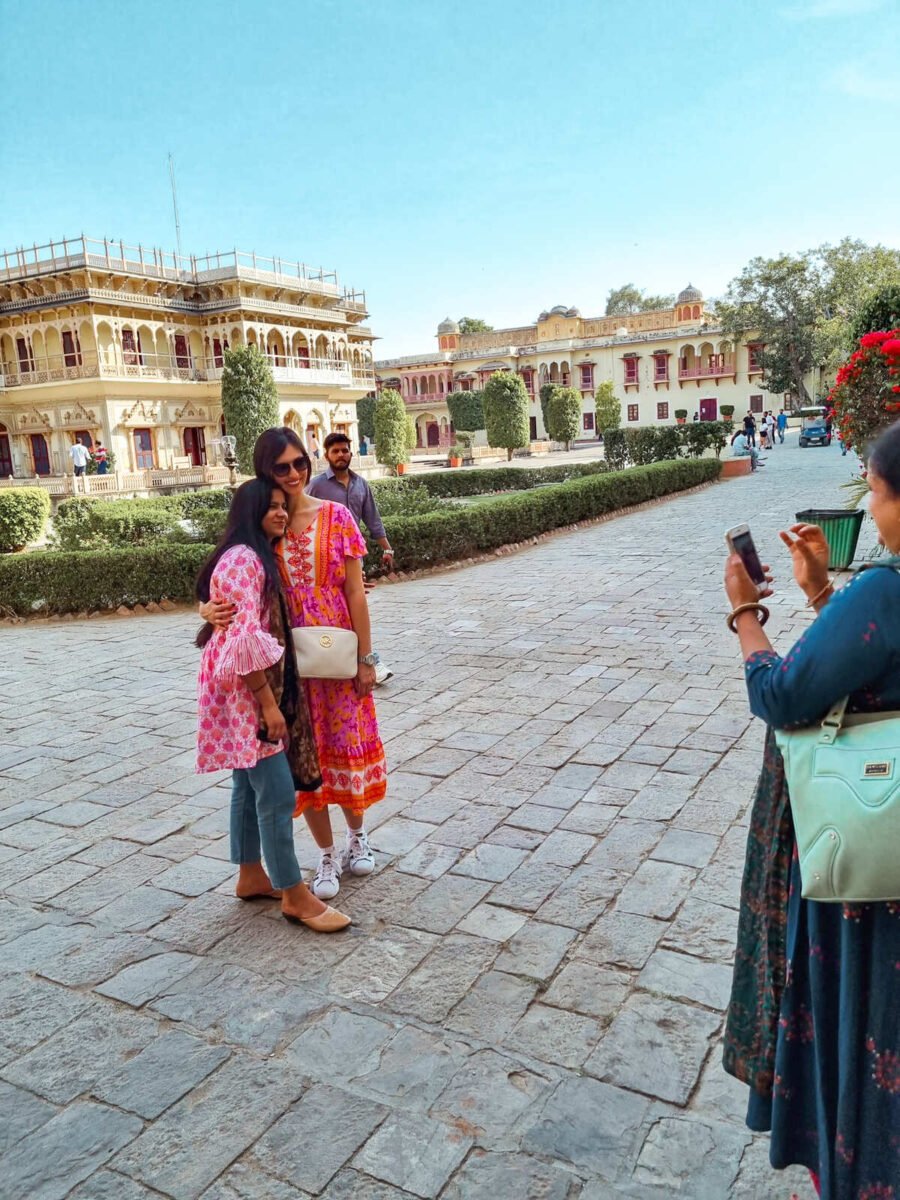
Where To Stay In Mumbai While Traveling Solo
For a safe and memorable trip, I recommend staying in one of Mumbai’s more popular and touristy areas, including Colaba, Fort, and Nariman Point. When booking accommodation, read reviews carefully and avoid staying at the cheapest hotels, which can be less sanitary than you’re used to.
Colaba
Colaba is the most loved area by tourists and locals alike. It is Mumbai’s old British quarter and is full of heritage sites as well as great restaurants, bars, and Parsi cafes. The most popular local attractions are the Gateway of India, Taj Mahal Palace, Leopold Cafe, and Colaba Market.
The best place to stay in Colaba is undoubtedly the Taj Mahal Palace. After staying there myself, I cannot recommend it enough. Yes, it is more expensive than what you would usually pay for a hotel in India, but it’s still much cheaper than many average hotels in the USA or Europe.
If you’re traveling India on a budget, I also loved the President – IHCL SeleQtions.
 Click here for a list of top-rated Colaba hotels.
Click here for a list of top-rated Colaba hotels.
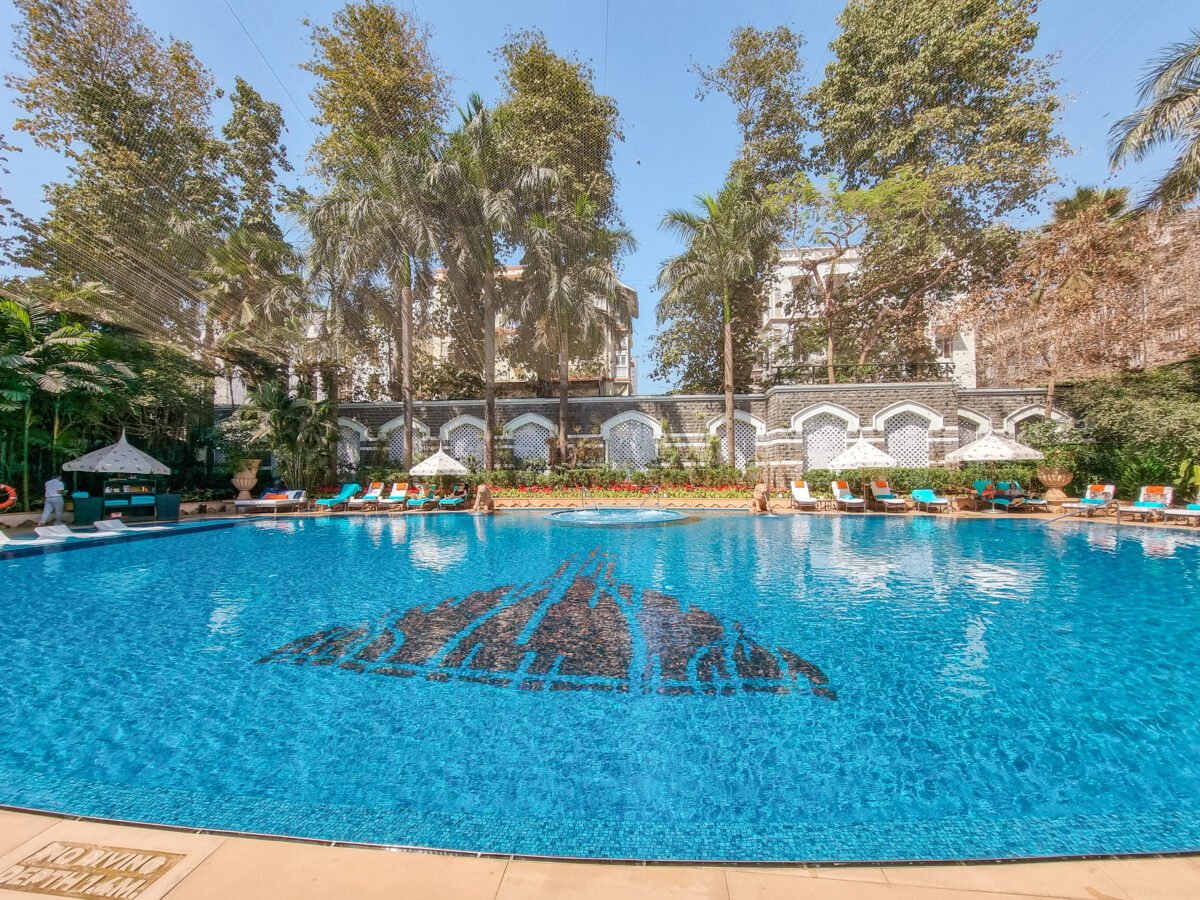
Fort
Right next to Colaba is the Fort district, which was first developed by the British when they occupied Mumbai in the 17th century. This is the part of Mumbai that will remind you so much of London!
Fort is full of great museums, historical sites, and restaurants—not to mention the city’s most famous market, Crawford Market.
Sadly, there are no good hotels in the heart of Fort, but there are some great ones bordering Colaba and Fort, such as Hotel Suba Palace, which is perfectly situated for sightseeing.
 Click here for a list of top-rated Fort hotels.
Click here for a list of top-rated Fort hotels.
Nariman Point
Nariman Point is a modern downtown area of Mumbai. It’s home to the scenic Marine Drive, a crescent-shaped promenade with beautiful views of the Arabian Sea, and is only a 30-minute walk from Colaba.
For something luxurious, opt for The Oberoi Mumbai. Or, if you want something more affordable, the Astoria Hotel borders Nariman Point and Fort.
 Click here for a list of top-rated Nariman Point hotels.
Click here for a list of top-rated Nariman Point hotels.
Mumbai accommodation map
To make it easier to search for your perfect hotel or vacation rental in Mumbai, here is an accommodation map. It’s currently set to Colaba, though you can easily change it to your preferred area of Mumbai:
Top Things To Do Alone In Mumbai
There are many things you can do in Mumbai alone. Add the following to your Mumbai solo trip itinerary for an unforgettable time:
1. Visit the Gateway of India
The Gateway of India is the most famous landmark in Mumbai. It’s a grand arch monument completed in 1924 to commemorate the 1911 visit of King George V, the first British monarch to set foot in India for his coronation as Emperor.
Located on the waterfront, this area is bustling with tourists and feels safe thanks to police and security presence. Spend time here solo—sit on a bench to admire the striking monument, soak in the sea views, and enjoy some of the city’s best people-watching.
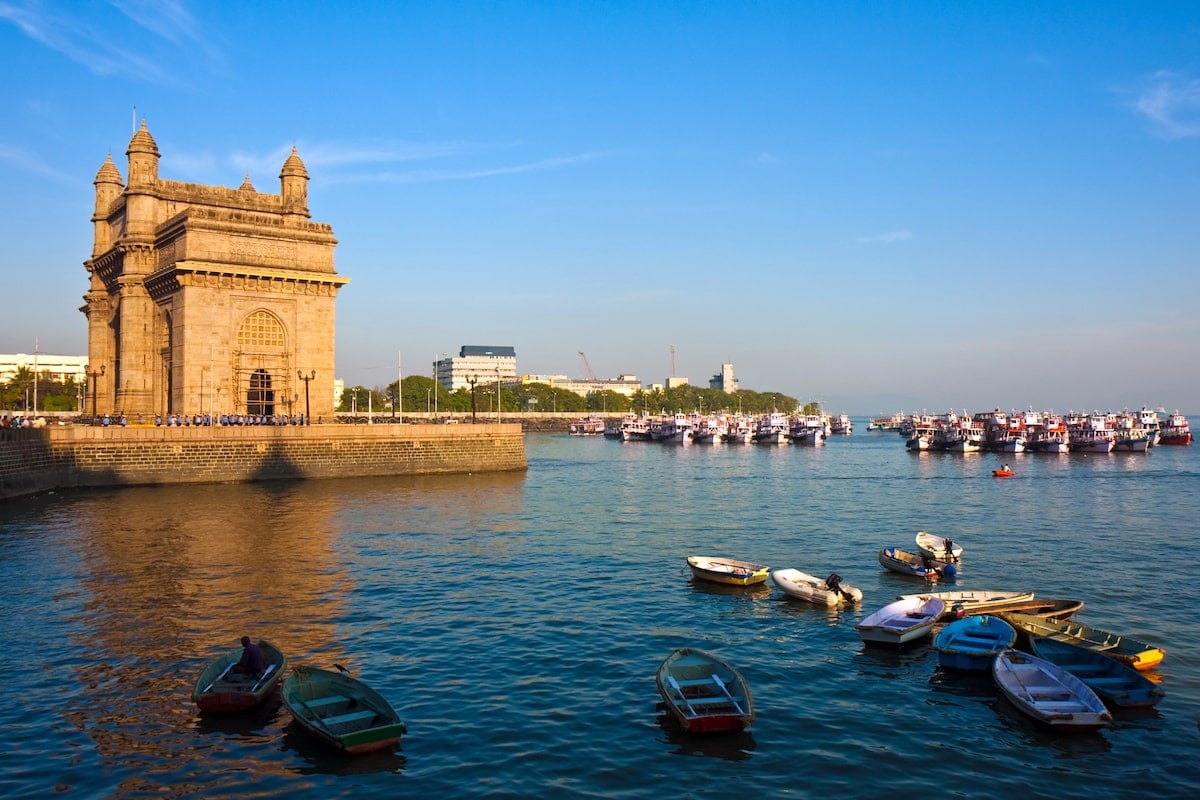
2. Stay at the Taj Mahal Palace
Next to the Gateway of India is the Taj Mahal Palace, which is not only an upscale hotel but also an important landmark.
Since its opening, it has hosted an impressive list of notable guests—including King George V and Queen Mary, The Beatles, Mick Jagger, Alfred Hitchcock, the Dalai Lama, Bill and Hillary Clinton, Barack Obama, and even Neil Armstrong!
What I love most is that staying at this stunning 5-star hotel is surprisingly affordable for what it offers, making it a fantastic bucket list experience to add to your Mumbai itinerary.
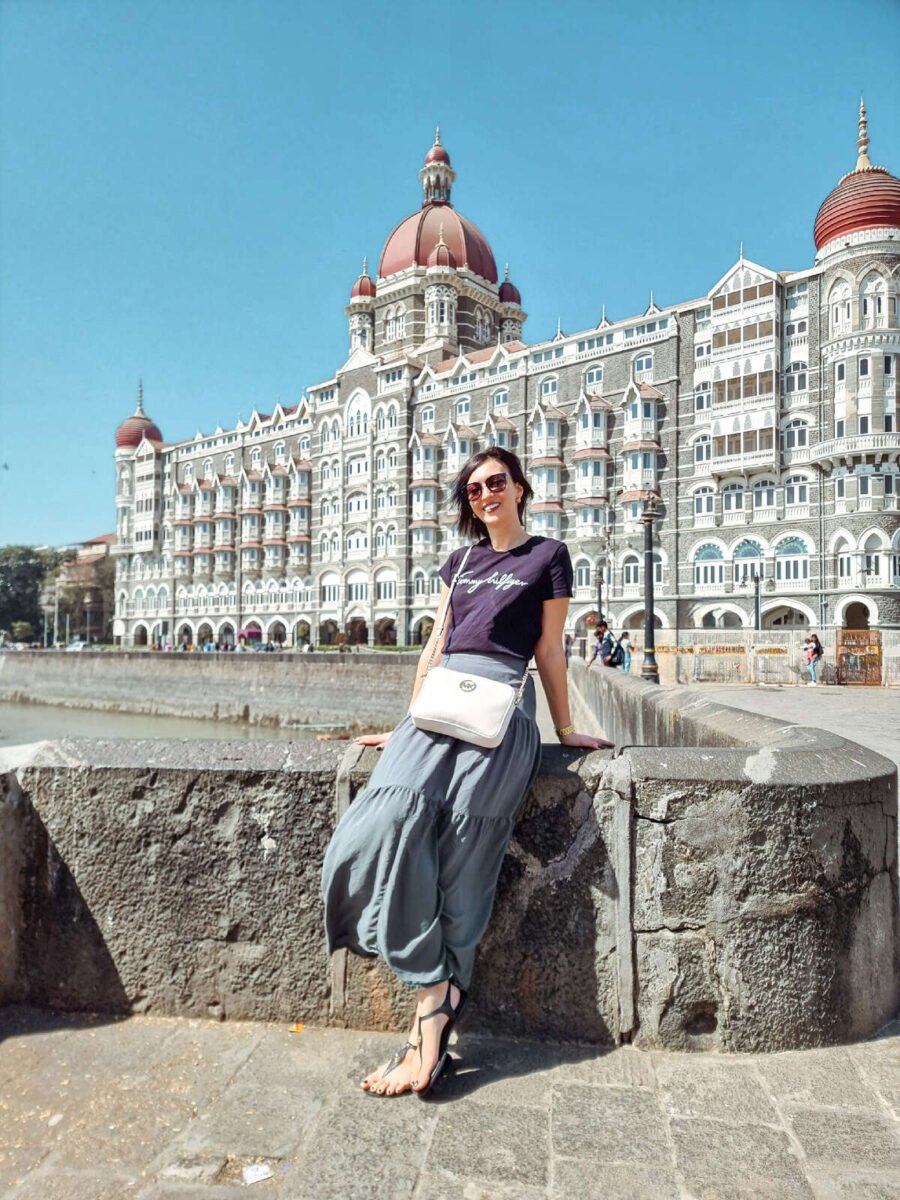
3. Visit Chhatrapati Shivaji Maharaj Vastu Sangrahalaya
Chhatrapati Shivaji Maharaj Vastu Sangrahalaya (formerly known as the Prince of Wales Museum) is a great place to learn about history and culture through an impressive collection of art, archaeology, and natural history.
Housed in a stunning Indo-Saracenic-style building constructed in the early 20th century, you can browse ancient Indian sculptures, traditional textiles, rare coins from different Indian dynasties, and even artworks and artifacts from beyond India.
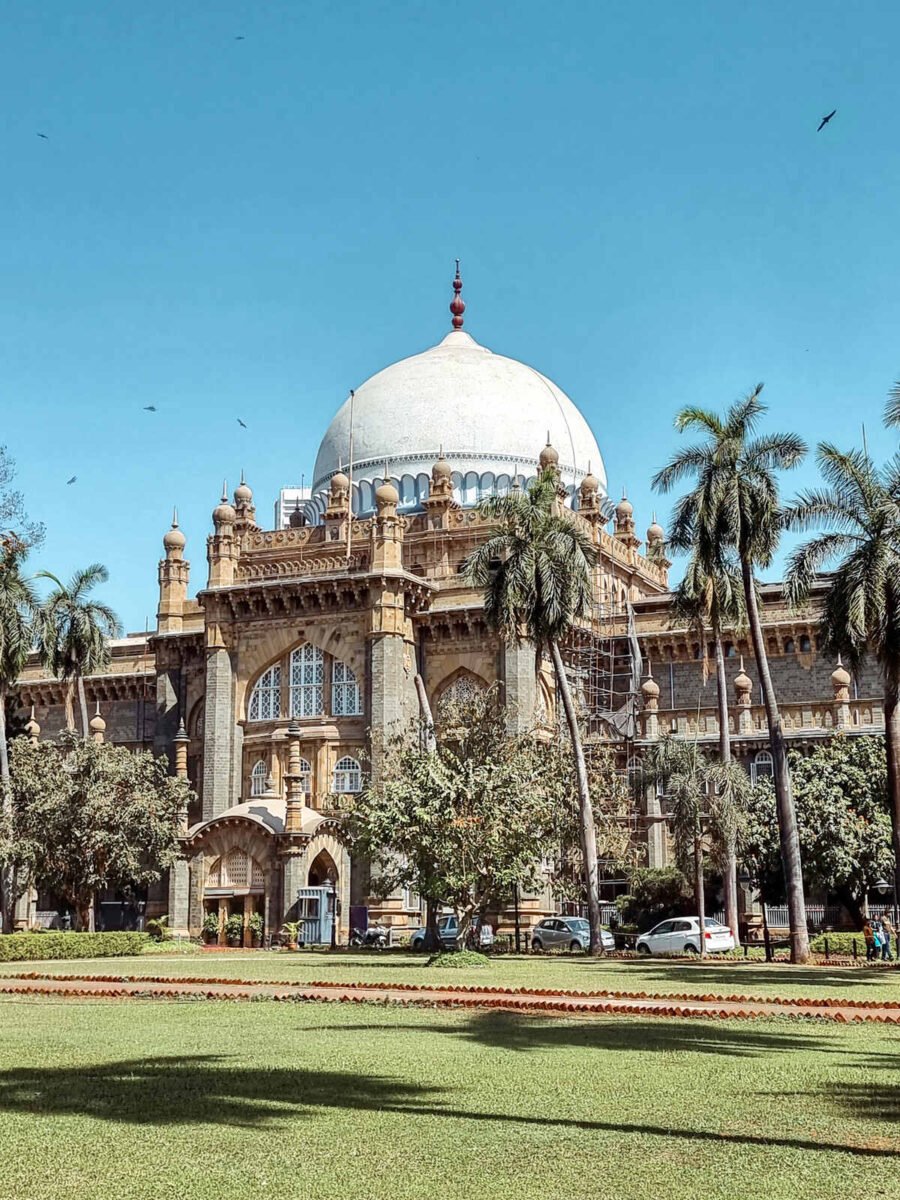
4. Check the Flora Fountain
Built in 1864, Flora Fountain is a stunning heritage site in Mumbai dedicated to the Roman goddess Flora.
Set amidst the city’s bustling traffic, this beautifully sculpted fountain offers a unique juxtaposition of serenity and chaos. What makes it even more special is the 360-degree view of some of Mumbai’s most architecturally striking buildings.
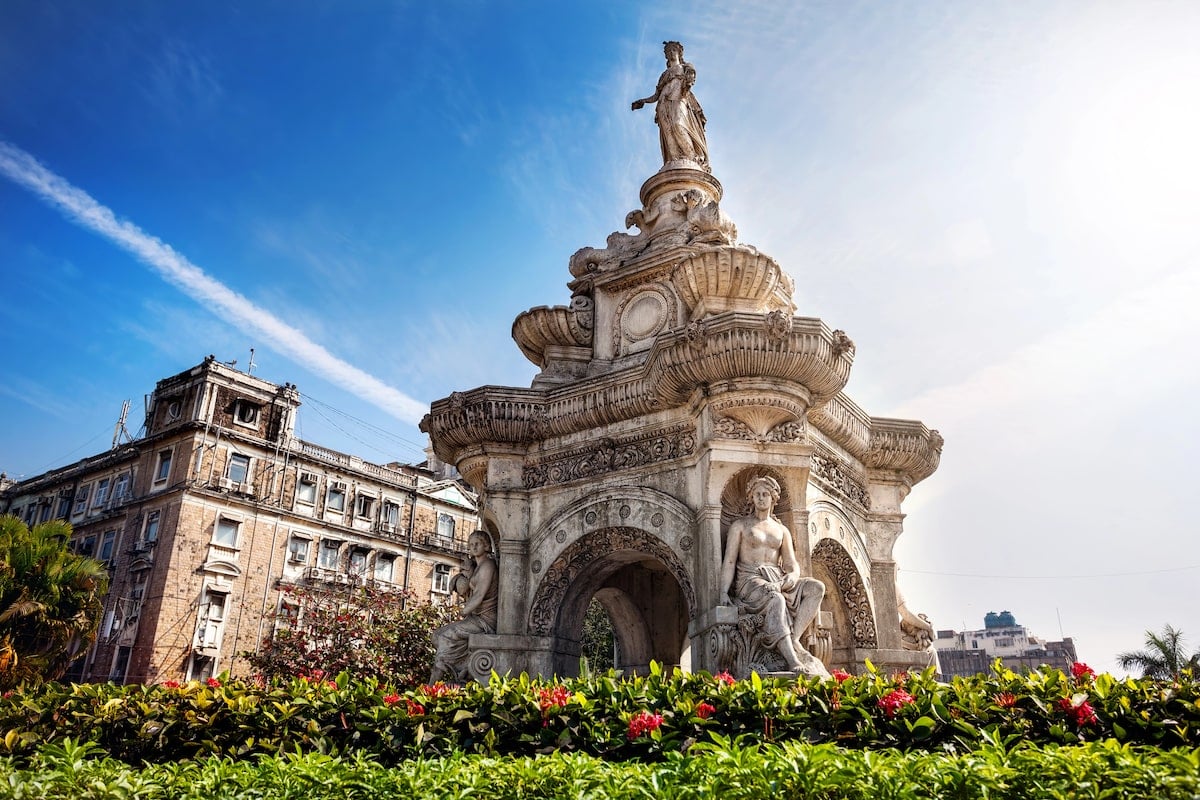
5. Don’t miss the Chhatrapati Shivaji Terminus train station
Near Flora Fountain is the Chhatrapati Shivaji Terminus train station (formerly Victoria Terminus), which is worth a visit even if you aren’t catching a train thanks to its stunning architecture.
Built in 1887, this UNESCO World Heritage Site is a striking example of Victorian Gothic design blended with traditional Indian elements. The exterior features ornate domes, pointed arches, stained glass windows, and intricate stone carvings that make it impossible to miss.
Along with admiring the facade, make sure to go inside to see the high vaulted ceilings, elegant staircases, and the beautifully detailed central dome showcasing incredible Indian craftsmanship.
6. Explore the Mumbai markets
Mumbai’s markets are the heartbeat of the city’s daily life and an incredible way to immerse yourself in Indian culture.
The best-known market is Crawford Market, a bustling hub of activity that can be overwhelming to navigate alone. For this reason, it’s recommended to explore it with a certified local guide—especially since there’s a walled section you can only enter with their assistance.
This is not a scam; the rule is clearly disclosed onsite and I’ve seen it myself. While the guide doesn’t charge an upfront fee, they’ll expect a tip, so have some cash ready to show your appreciation.
Alternatively, you can join a guided tour that includes Crawford Market for a stress-free experience.
If you prefer something simpler, head to Colaba Market near the Gateway of India. This market is more relaxed and you can easily explore its colorful stalls solo during the day.
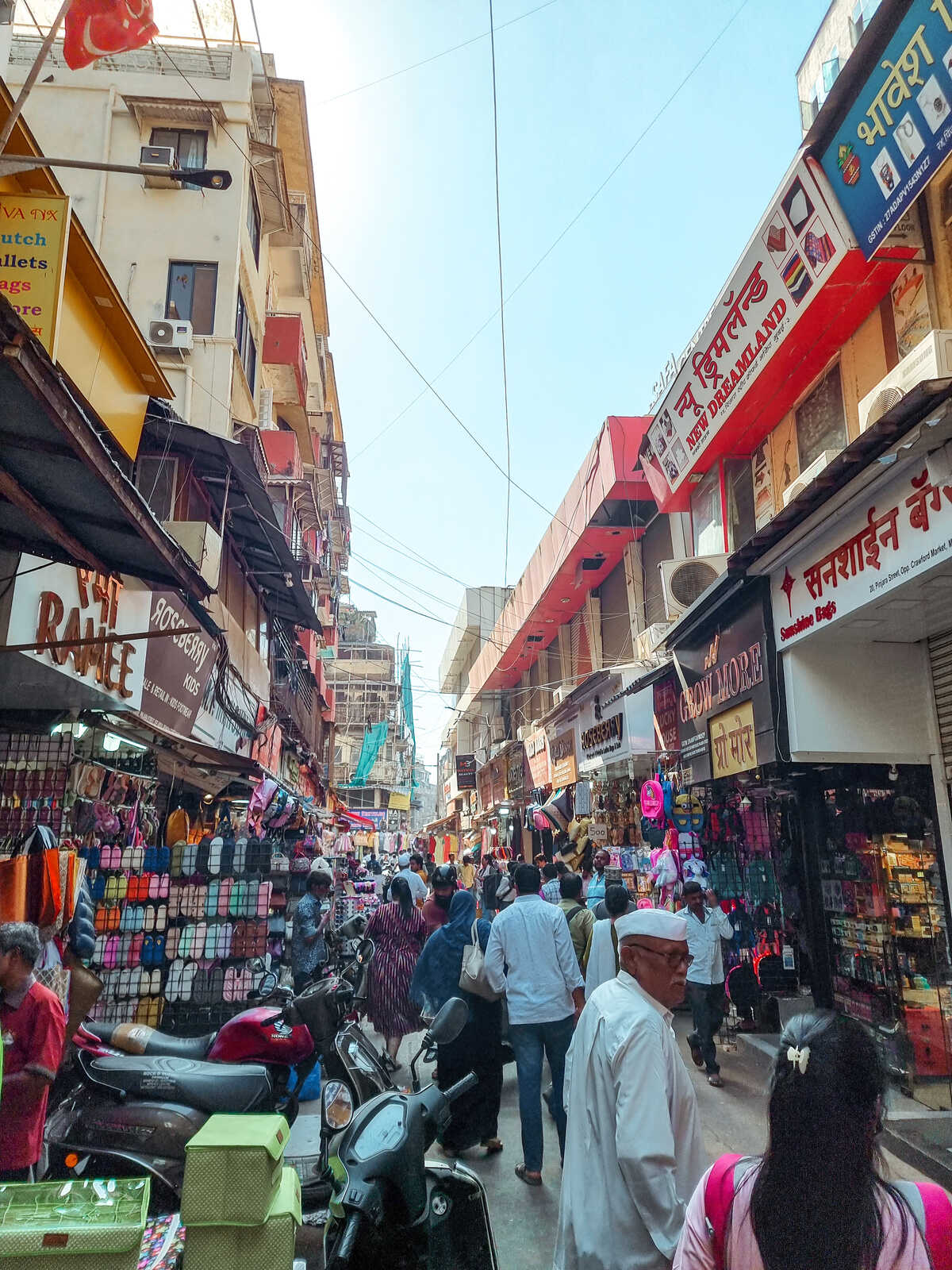
7. Watch the sunset at Girgaon Chowpatty Beach
Marine Drive—particularly Girgaon Chowpatty Beach—is one of the best spots in Mumbai to catch a stunning sunset.
Just sit on the sand, watch the golden hues paint the sky, and enjoy the contrast between the expansive Arabian Sea and Mumbai’s iconic skyline—which reminds me of Miami’s South Beach!
While there, expect some locals to ask for selfies. If you’re not comfortable with it, politely decline or ignore the requests, as engaging could lead to interruptions that disrupt your peaceful moment (I eventually had to leave because of this!).
In terms of safety, sunset time is perfectly fine since the area is family-friendly, bustling with food and drink stands, and generally lively and safe. That being said, it’s recommended to catch a taxi before it gets totally dark.
One important note: while it’s a beach, swimming isn’t common for women in India, and wearing a bikini is not culturally appropriate here. Plus, the water is heavily polluted, so save your swimming plans for Goa, where beaches like Palolem Beach are more relaxed and tourist-friendly.

8. Visit the historic fishing village of Worli
Worli Koliwada is one of Mumbai’s oldest fishing villages and a fascinating place if you’re looking to experience the city off the beaten path. This historic settlement, home to the Koli community for over 800 years, is also part of the original seven islands that formed Mumbai.
While visiting, check out unique landmarks like the Nipponzan Myohoji Buddha Temple and the Temple of the Talking Goddess—both of which offer a glimpse into the area’s spiritual and cultural heritage.
Located about a 35-minute drive from the Gateway of India, Worli Koliwada is easily accessible by Uber, or you can opt for this top-rated Worli Village guided tour.
9. Do a Dharavi slum tour
Dharavi, Mumbai’s largest slum, is home to over one million people living in just 0.92 square miles (2.39 square kilometers), making it one of the most densely populated areas in the world.
Despite its harsh living conditions, Dharavi is a hub of small-scale industries like pottery, leatherwork, and recycling.
Before deciding whether this experience is for you, research thoroughly to ensure it aligns with your interests and comfort level. If you choose to go, a guided tour is essential—not only for safety but also for providing context and ensuring the visit is ethical and respectful of the community.
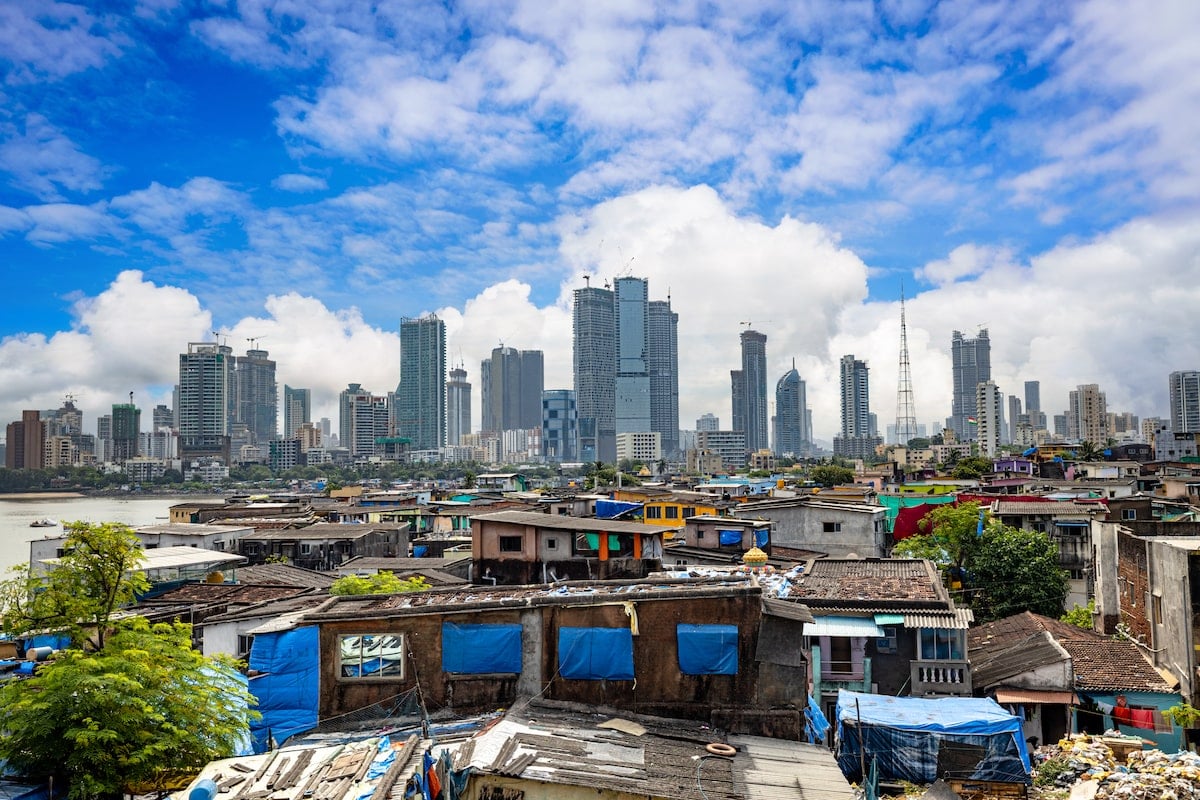
10. See street art at Sassoon Docks
Built in 1875, Sassoon Docks is one of Mumbai’s oldest and most historic docks, originally serving as the city’s first wet dock. Today, it’s not just known as Mumbai’s largest fish market but also as a trendy hub for street art enthusiasts.
The colorful murals and graffiti here showcase Mumbai’s progressive art scene, with the docks often hosting open art exhibitions.
While street art can be found throughout Mumbai—like the murals I stumbled upon walking from Crawford Market to Marine Drive—Sassoon Docks is the best place for it.
Conveniently located just a 30-minute walk from the Gateway of India, Sassoon Docks is easy to visit while exploring other popular Mumbai attractions.
11. Do a day trip from Mumbai
While visiting Mumbai solo, do at least one of the many interesting day trips. A few highly recommended options include:
Lonavala Hill and Karla & Bhaja Caves. Renowned for its stunning natural beauty, Lonavala features lush green valleys and breathtaking views. Nearby are the remarkable Karla & Bhaja Caves, ancient Buddhist caves carved more than 2,500 years ago, showcasing incredible rock-cut architecture.
Elephanta Caves. Also known as the “City of Caves,” this UNESCO World Heritage Site sits on an island in the Sea of Oman near Mumbai. Carved around 1,500 years ago, these rock-cut caves feature intricate sculptures and temple architecture dedicated to Hindu gods.
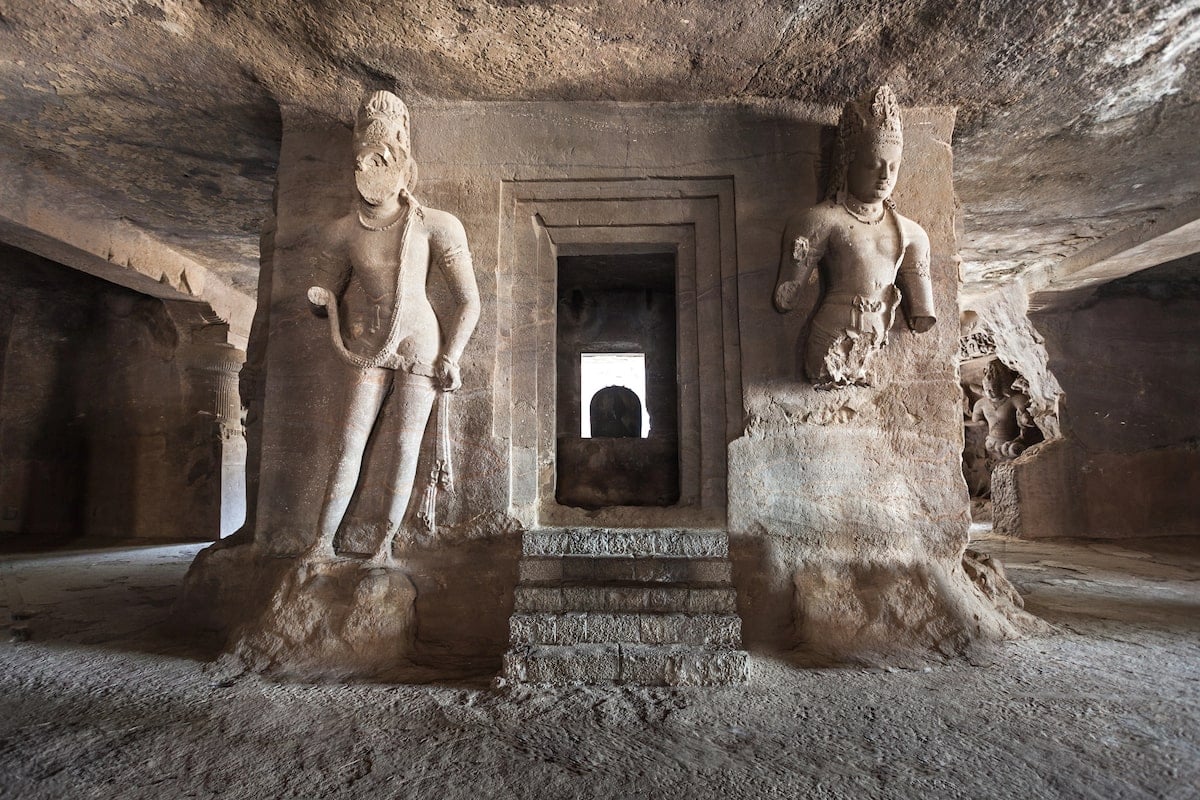
Sanjay Gandhi National Park & Kanheri Caves. Mumbai is home to many incredible cave temples, and this guided tour combines two must-visit attractions. Explore the Kanheri Caves, which date back 2,400 years and feature impressive ancient carvings, and Sanjay Gandhi National Park, a protected area offering lush greenery and a peaceful escape from the city.
Mumbai Solo Travel Map
To help give you a lay of the land, here is a map of Mumbai with the above-mentioned places pre-plotted:
Top-Rated Tours For Solo Travelers In Mumbai
One of the best ways to gain a deeper understanding of the places you visit while meeting locals and making new friends during solo travel in Mumbai is to book a guided tour. A few top-rated tours in Mumbai include:
- Private Mumbai Sightseeing Tour
- Highlights of Mumbai Sightseeing Tour
- Elephanta Caves & Island Guided Private Tour
- The Famous Bollywood Tour of Mumbai
- Guided Mumbai Street Food Tour
 Click here for a full list of Mumbai tours.
Click here for a full list of Mumbai tours.
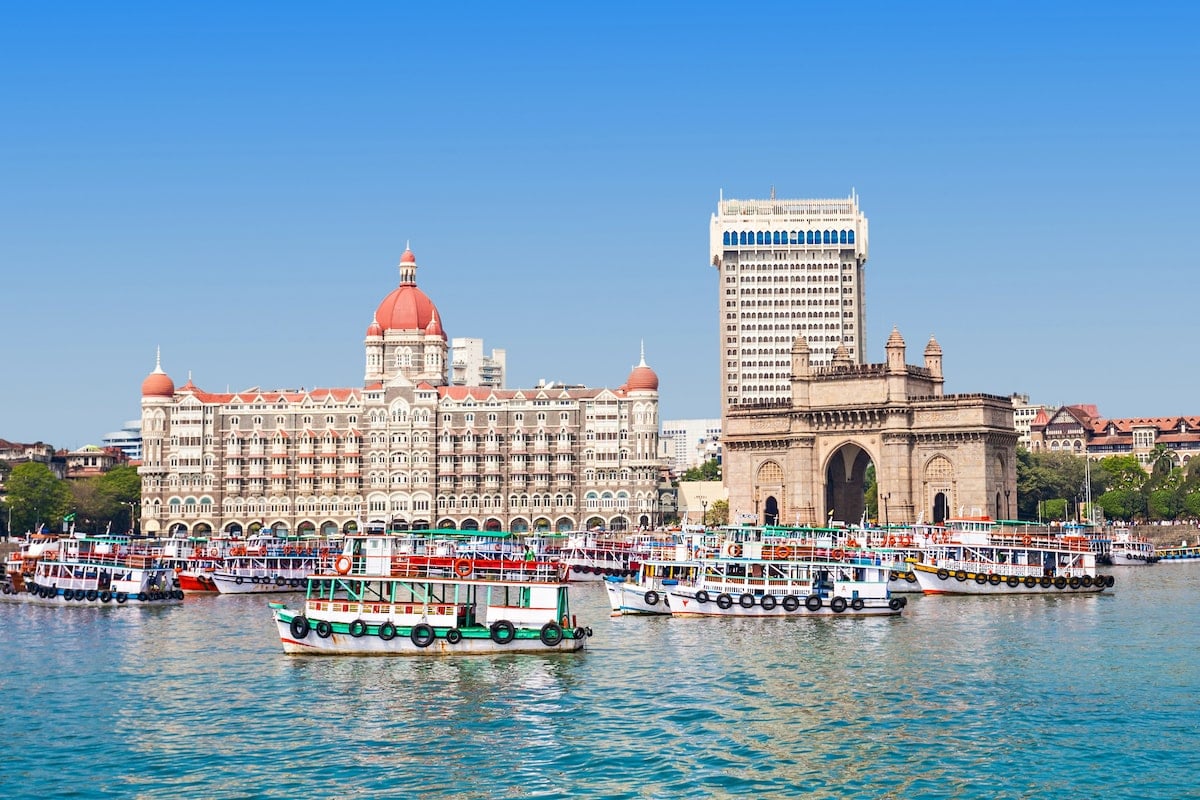
Tips For Solo Dining In Mumbai
To help you enjoy a memorable meal out on your own, here are some tips:
1. Choose touristy areas. The first reason for this is that in bustling areas, dining alone feels completely normal, much like in Europe or the US. Second, restaurants in these areas are more likely to maintain higher hygiene standards, which is particularly important when traveling in India.
2. Be cautious about eating street food. While Mumbai’s street food is a cultural highlight, hygiene can be a concern. I avoided street food markets and opted for local restaurants with excellent reviews (4.5+ stars on Google) or well-known international chains. If you want to explore street food, consider booking a guided street food tour with a local expert. They’ll know the safest places to eat, minimizing your risk of food poisoning or “Delhi Belly.”
3. Have a backup plan. Even with precautions, you might still encounter stomach issues. During my trip, I relied on McDonald’s when I needed a safe and fast meal. While I’m not usually a fan, their strict global hygiene protocols made it a reliable option when I wasn’t feeling well.
4. Have a meal at Leopold Cafe. This historic establishment dates back to the 19th century and is a popular spot for tourists and locals alike. The food is excellent—so much so that I went twice in one trip—and you can enjoy a pint of beer in a relaxed setting. Note that as this restaurant survived the 2008 terrorist attacks, there is extra security at the door for added safety.
5. Eat in a local home. If you’re worried about feeling awkward dining alone or just want to immerse yourself in Indian culture through food, opt for a cooking class. Many experiences also include visiting a market or dining in a local home for a truly memorable meal.
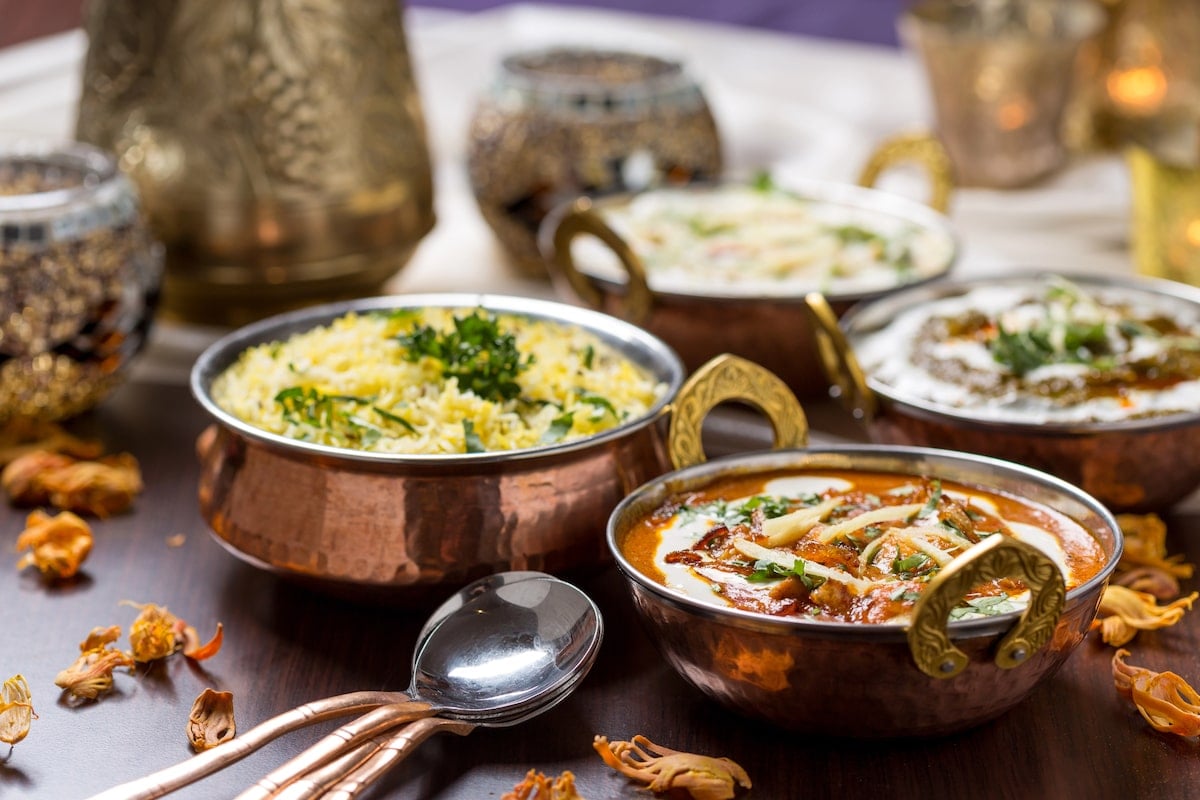
India Travel Insurance
When visiting India, or anywhere else in the world, it’s important to get travel insurance.
For this, I have two recommendations:
SafetyWing. If you’re looking for something straightforward and budget-friendly, you can’t beat SafetyWing. They offer one global policy that you can cancel at any time or continue paying for long-term coverage (making it the perfect option for digital nomads!).
Their plan includes medical coverage, trip interruptions, personal liability, unplanned overnight stays, lost luggage, and more.
World Nomads. For something more comprehensive, World Nomads is a great option. While you’ll pay a bit more, you’ll typically get higher coverage maximums as well as additional inclusions—like trip cancellation.
Frequently Asked Questions About Mumbai Solo Travel
Now that we’ve gone over where to go and what to do when visiting Mumbai solo, I want to answer some frequently asked questions:
Q) Is Mumbai a walkable city?
While Mumbai is a megacity of around 22 million people, the main tourist attractions are near one another, making the city relatively walkable.
Q) Is it safe to walk around Mumbai at night?
Unfortunately, walking around Mumbai at night is not considered safe, especially for solo female travelers. Even when accompanied by other women, it’s advisable to avoid venturing out after dark unless you are part of a group that includes at least one male companion.
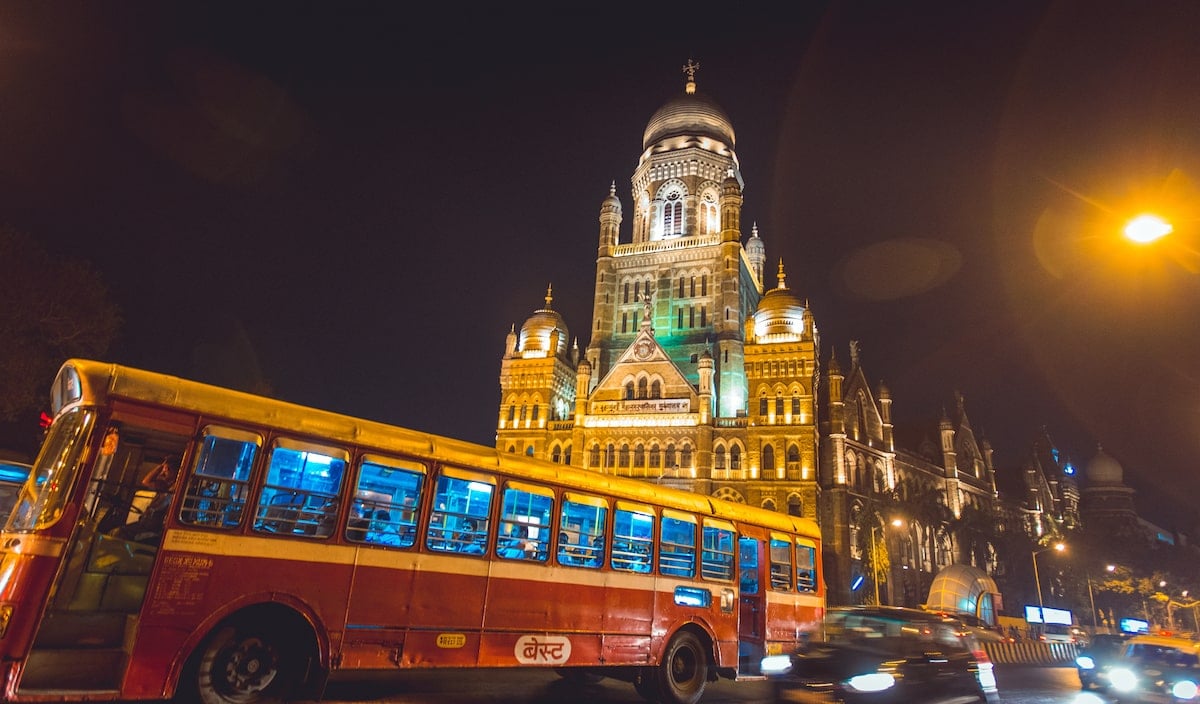
Q) Is traveling in Mumbai cheap or expensive?
Mumbai is moderate in terms of expenses. While India is generally considered a budget-friendly country, it’s advisable to avoid the cheapest hotels and street markets for sanitary reasons, opting instead for mid-range or luxury accommodations and highly-rated restaurants, which are still more affordable than in Europe or the US but can be pricier than expected for India.
Q) How can I meet people while traveling solo in Mumbai?
The best way to meet people while traveling solo in Mumbai is to join group activities like guided tours and attend cooking classes. You can also join Mumbai- and travel-related Facebook groups to try to meet people before you arrive.
Q) What should I pack when visiting Mumbai?
Pack midi or maxi dresses and trousers, along with short-sleeve t-shirts or shirts, as these are appropriate for exploring Mumbai. Avoid mini dresses, skirts, or shorts unless you’re staying within your hotel, where Western-style attire is generally acceptable; most hotels also have swimming pools, so bring a swimsuit for relaxing by the water.
Comfortable sneakers and sandals are ideal for walking around, but avoid brand new or expensive footwear, as Mumbai’s streets can be dirty and may damage them.
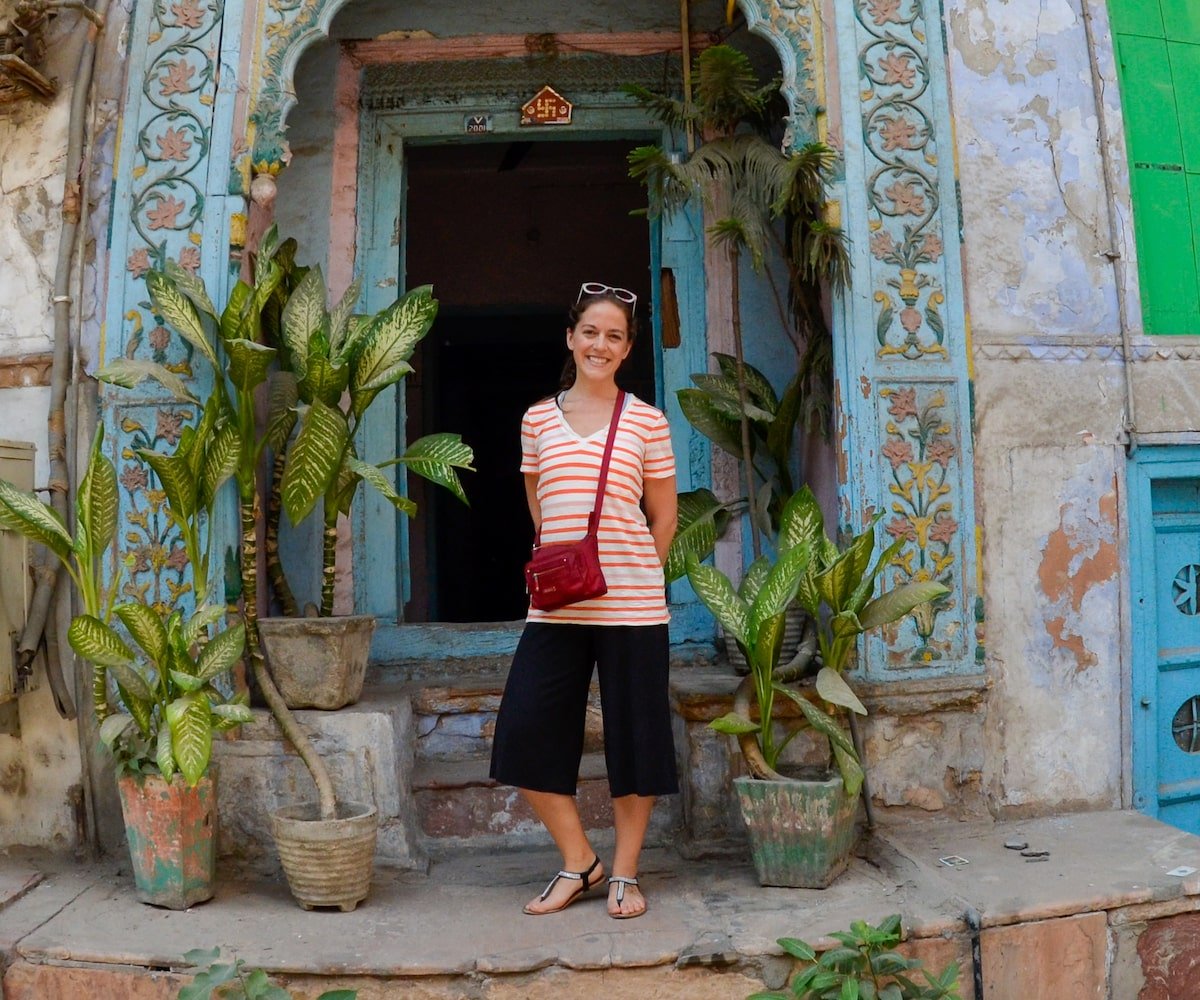
Final Thoughts On Solo Travel In Mumbai
Mumbai is an excellent starting point for solo travel in India, offering a mix of independent experiences and guided tours that allow you to connect with like-minded travelers. While it’s generally safe, planning and staying mindful of logistics will help ensure a smooth trip.
A visit to India is unforgettable, and Mumbai serves as the perfect introduction to the vibrant, colorful, and dynamic culture of the South Asian subcontinent. If you’re considering solo female travel, make sure to add Mumbai to your list!

